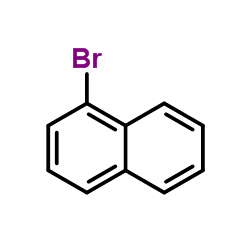High quality dispersions of hexabenzocoronene in organic solvents.
J Marguerite Hughes, Yenny Hernandez, Damian Aherne, Lukas Doessel, Klaus Müllen, Ben Moreton, Thomas W White, Cerianne Partridge, Giovanni Costantini, Aleksey Shmeliov, Mervyn Shannon, Valeria Nicolosi, Jonathan N Coleman
文献索引:J. Am. Chem. Soc. 134(29) , 12168-79, (2012)
全文:HTML全文
摘要
We have studied the exfoliation and dispersion of hexabenzocoronene (HBC) in 28 different solvents. We see a wide range of dispersed concentrations and aggregation states, all of which can be related to the solvent properties. To a first approximation, the dispersed concentration is maximized for solvents with Hildebrand solubility parameter close to 21 MPa(1/2), similar to graphitic materials such as nanotubes and graphene. We have also studied the concentration dependence of the absorbance and photoluminescence of HBC for both a good solvent, cyclohexyl pyrrolidone (CHP), and a poor solvent, tetrahydrofuran (THF). In both cases, we observe features that can be associated with either individual molecules or aggregates, allowing us to establish metrics both for aggregate and individual molecule content. While the aggregate content always increases with concentration, good solvents disperse individual molecules at relatively high concentrations while poor solvents display aggregation even at low concentrations. Using these metrics, we determine that large populations of individual molecules are present at low concentrations in certain solvents with Hildebrand solubility parameters close to 21 MPa(1/2). However, the aggregation state of HBC is considerably more sensitive to solvent Hildebrand parameter for halogenated solvents than for amide solvents. We find a combination of high overall concentrations and large populations of individual molecules in four solvents: cyclohexyl pyrrolidone, 1-chloronaphthalene, 1-bromonaphthalene, and 1,2,4-trichlorobenzene. Scanning tunnelling microscopy (STM) measurements show the formation of self-assembled monolayers at the interface between a HBC-solvent dispersion and a highly oriented pyrolytic graphite (HOPG) substrate. Similar structures were observed on ultrathin supports by aberration-corrected transmission electron microscopy (TEM). Also observed were graphitic objects of size ~1 nm consistent with monomers or aggregated stacks of very few monomers. We believe this is strong evidence of the presence of individual molecules in dispersions prepared with appropriate solvents.
相关化合物
| 结构式 | 名称/CAS号 | 分子式 | 全部文献 |
|---|---|---|---|
 |
1-溴代萘
CAS:90-11-9 |
C10H7Br |
|
Room temperature phosphorescence of alpha-bromonaphthalene i...
2007-02-05 [Anal. Chim. Acta 583(2) , 364-9, (2007)] |
|
Vibrational spectral analysis and first hyperpolarizability ...
2011-12-01 [Spectrochim. Acta. A. Mol. Biomol. Spectrosc. 83(1) , 553-60, (2011)] |
|
Adhesion of Pseudomonas aeruginosa to silicone rubber in a p...
1997-08-01 [Microbiology 143 ( Pt 8) , 2569-74, (1997)] |
|
A protocol for determining the surface free energy of dental...
2004-03-01 [Dent. Mater. 20(3) , 262-8, (2004)] |
|
Spectroscopic study on binding behaviors of different struct...
2004-06-15 [J. Colloid. Interface Sci. 274(2) , 645-51, (2004)] |